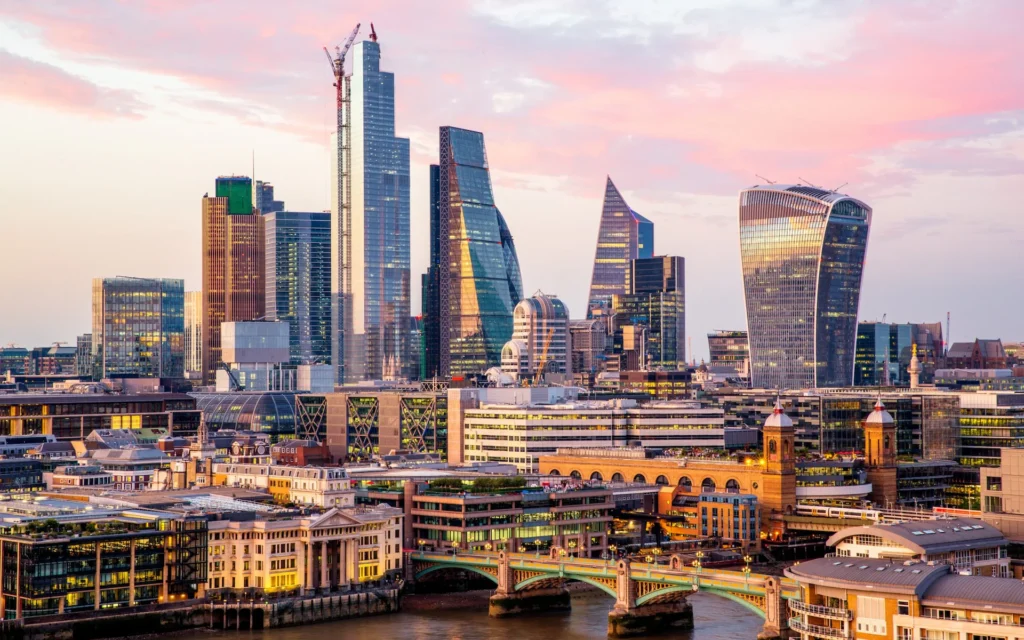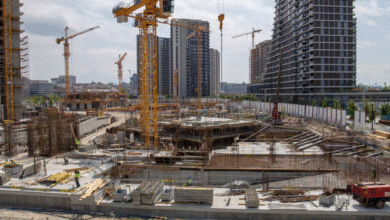Abandoned Buildings in London – Hidden Histories and Forgotten Spaces

London is a city known for its vibrant culture, striking modern skyline, and rich architectural heritage. Yet beneath the surface of polished skyscrapers and bustling streets lies another London—one that time has forgotten. Abandoned buildings in London whisper stories of the past, standing as hauntingly beautiful reminders of the city’s evolution. From derelict factories to decaying mansions, these structures capture the imagination of historians, photographers, and urban explorers alike.
Every corner of London hides remnants of its industrial might and social history. Some of these buildings were once thriving businesses, grand homes, or essential public institutions, now left to crumble under the weight of neglect. Their faded façades and broken windows serve as silent witnesses to the passage of time. Exploring these spaces reveals not only architectural splendor but also the deeper social and economic changes that shaped the city.
This article explores the history, notable sites, and modern fascination surrounding abandoned buildings in London. It also looks ahead at how the city is balancing preservation and redevelopment. Whether you’re a history lover, an urban adventurer, or simply curious about London’s forgotten corners, this guide offers a glimpse into a world few get to see.
The Historical Context of London’s Abandoned Buildings
The story of London’s abandoned buildings is closely tied to the city’s industrial and social evolution. During the 19th and early 20th centuries, London was the beating heart of the British Empire—its factories, mills, and warehouses symbolizing global economic power. However, as industries declined after World War II, entire sectors collapsed, leaving behind countless structures with no purpose.
The devastation of the Blitz during World War II also left thousands of buildings in ruins. While some were rebuilt, others were abandoned or demolished in the rush toward modernization. Post-war urban planning favored new developments, which often meant that older buildings were left neglected, deemed unfit for modern living or commercial use.
Another major factor in the city’s architectural abandonment is deindustrialization. As manufacturing moved overseas and technology advanced, large industrial sites such as power stations and mills became obsolete. These massive structures, once central to daily life, now stand empty—monuments to a bygone era of labor and innovation. The decay, however, has only enhanced their mystique, turning them into cultural artifacts worth preserving.
Famous Abandoned Buildings and Sites in London
Among the many abandoned sites in London, a few have become icons of urban decay and rebirth. One of the most famous examples is the Battersea Power Station. Once a vital source of electricity, its towering chimneys dominated the London skyline for decades. After years of neglect, it fell into disrepair, becoming one of the city’s most recognizable derelict landmarks. Fortunately, it has since been redeveloped into a modern residential and commercial hub—an inspiring example of adaptive reuse.
Another hauntingly beautiful site is Millennium Mills, located in the Royal Docks. This colossal flour mill, once bustling with workers and machinery, now stands as a ghostly shell of industrial Britain. Its vast, crumbling façade has become a favorite spot for photographers and filmmakers, symbolizing the intersection between decay and grandeur.
London is also home to numerous hidden abandoned places, such as disused underground stations—Aldwych and Down Street being the most famous examples. These eerie subterranean spaces once buzzed with commuters but now serve as time capsules of early 20th-century life. Beyond these, forgotten hospitals, empty schools, and derelict Victorian homes scatter the cityscape, each with a story waiting to be rediscovered.
Urban Exploration: Discovering London’s Forgotten Corners

The growing fascination with urban exploration (urbex) has transformed abandoned buildings in London into unofficial tourist destinations. Urban explorers are drawn to these decaying sites not only for their visual appeal but also for the thrill of discovery and the connection to history they offer. For many, walking through a forgotten hospital ward or standing inside an empty train station is like stepping back in time.
However, exploring abandoned buildings comes with risks. Many of these structures are unsafe due to structural decay, asbestos, or unstable flooring. Legally, entering private or restricted sites without permission is considered trespassing. Responsible explorers therefore advocate for safety and respect—documenting their experiences through photography and storytelling rather than causing damage.
Social media has also played a huge role in popularizing urban exploration. Platforms like Instagram and YouTube are filled with hauntingly beautiful images of peeling paint, overgrown hallways, and forgotten machinery. These photographs not only satisfy curiosity but also raise awareness about London’s hidden heritage. The artistry of decay has become a modern way to preserve history, inspiring conversations about restoration, memory, and the passage of time.
The Future of Abandoned Buildings in London
While some abandoned buildings remain derelict, others are finding new life through restoration and redevelopment. Projects like the revival of Battersea Power Station and the repurposing of historic warehouses in King’s Cross show how creativity and investment can transform decay into opportunity. These efforts blend preservation with innovation, allowing London to retain its historical charm while meeting modern needs.
Government and heritage organizations, including Historic England, play an essential role in protecting these structures. By listing buildings of architectural or cultural significance, they ensure that redevelopment efforts maintain historical integrity. Yet, challenges remain. The cost of restoration, safety concerns, and property ownership issues often hinder progress, leaving many sites trapped in limbo.
The future of London’s abandoned buildings may depend on public awareness and sustainable planning. As more people value historical preservation and community engagement, there’s hope that these forgotten structures will once again become part of the living city—revitalized spaces that honor the past while embracing the future.
Conclusion
London’s abandoned buildings are more than just ruins—they are stories carved into brick and stone. They remind us that progress often leaves shadows, and that beauty can exist even in decay. Whether reborn through restoration or preserved as monuments of memory, these forgotten spaces continue to shape the city’s identity.
Exploring them, whether through photographs or guided tours, offers a deeper understanding of London’s layered history. It’s a journey through time, where every cracked wall and rusted gate tells a tale of ambition, loss, and resilience. The abandoned buildings in London stand not as failures but as fragments of a living, breathing metropolis that never truly forgets its past.
Frequently Asked Questions (FAQs)
What are the most famous abandoned buildings in London?
Notable examples include Battersea Power Station (before redevelopment), Millennium Mills, and several disused underground stations such as Aldwych and Down Street.
Is it legal to explore abandoned buildings in London?
Entering without permission is trespassing. Always seek official access or join guided tours where available.
Why does London have so many abandoned buildings?
Industrial decline, war damage, and shifts in urban development have all contributed to widespread abandonment over time.
Are there any restoration projects in progress?
Yes, several, including redevelopments in Battersea, King’s Cross, and parts of the Docklands.
What’s the best way to learn more about these sites?
Join heritage tours, follow urban exploration photographers, or consult archives and resources from Historic England.
You May Also Read: Club Mill Road




